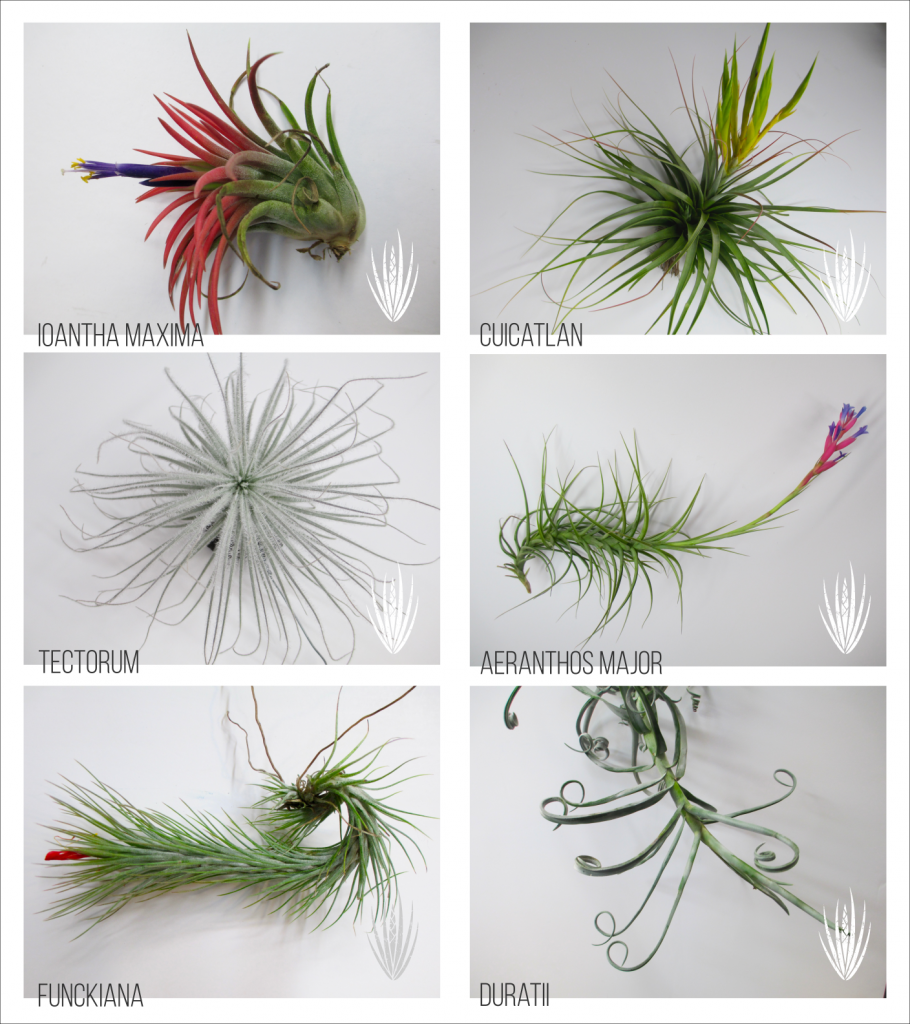Selecting healthy Tillandsia, also known as Air Plants, is almost the same as selecting any other plant.
Normally you want to select a plant with a good root system, but air plants don’t use their roots to get nutrients or water. If an air plant has roots or no roots, it’s not something to worry about.
Nursery:
When you visit a nursery you can usually get a feel for the overall condition of the plants. You shouldn’t see weeds, it should appear lush and each plant should have minimal blemishes.
Pests:
Check for critters by looking under and between the leaves. If you bring a pest infested plant home, they can quickly spread to all your plants at home.
Foliage:
Air plants come with many different types of foliage. Some are green while others are more silvery green, some are shiny and smooth but others may have a velvety texture.
A few examples of healthy air plants and how different they are from one another.
Steer clear of any plants that are yellowing or have brown leaves, or if they appear dry along the edges.
Are the leaves firm yet pliable or do they make a crunchy sound when you give it a little squeeze? The plants should have a bushy even appearance, leaves are spaced fairly even and well filled out.
Dyes and Paints:
There are people out there who add dyes and/or paints to the leaves of air plants with the hope to make them more desirable to the consumer.
Without knowing the toxicity of these dyes and paints, we would recommend you avoid artificially colored plants,
The dyes and paints can also create a barrier between the leaves and sunlight that prevents photosynthesis.
You can ask the retailer if the plants have been “enhanced” artificially, you may or may not get the truth. We saw the plant below at a major retailer garden center which is a good example of what not to buy! The arrangement below is a tragedy and not even close to being worth $24.98
It’s a great idea to familiarize yourself with the plant you want before you go to the nursery so you are aware of it’s natural color, shape and size.
If you have a smartphone, you can look it up while you’re looking at the plant which is very helpful!
[Email Subscribe]







The one question I had was what do you use to adhere Tillies to bark or other type material? I found my answer. I have been using a product from a reliable nursery called Goop. I was wondering if it might be too
strong an adhesive but so far I haven’t seen anything adverse on my plants. I do have the glue you suggest
so I think I will try it from now on. I love your clever arrangements I think I will create something similar. They are so pretty it looks like the Tillies are happy. I live in Fl. We have Hurricanes. I have brought in most of mine
on to the patio so they will be protected. Now I mist them often as it is so humid and HOT.
Thanks for so many great ideas. I really love working with these Air Plants. I mean really, no dirt, they seem to enjoy being neglected. (which I don’t really do!) But I do now with Succulent and Sedums! I lost many by
being too attentive. I transplanted most of them next to the house where it is protected, you know when the
home is being built, the workers throw lots of trash at the foundation. but they are doing just fine. Good drainage, I guess. Anyway, they came through Hur. Irma, great!
Enough of this “Novel”, thanks keep in touch.
Nancy